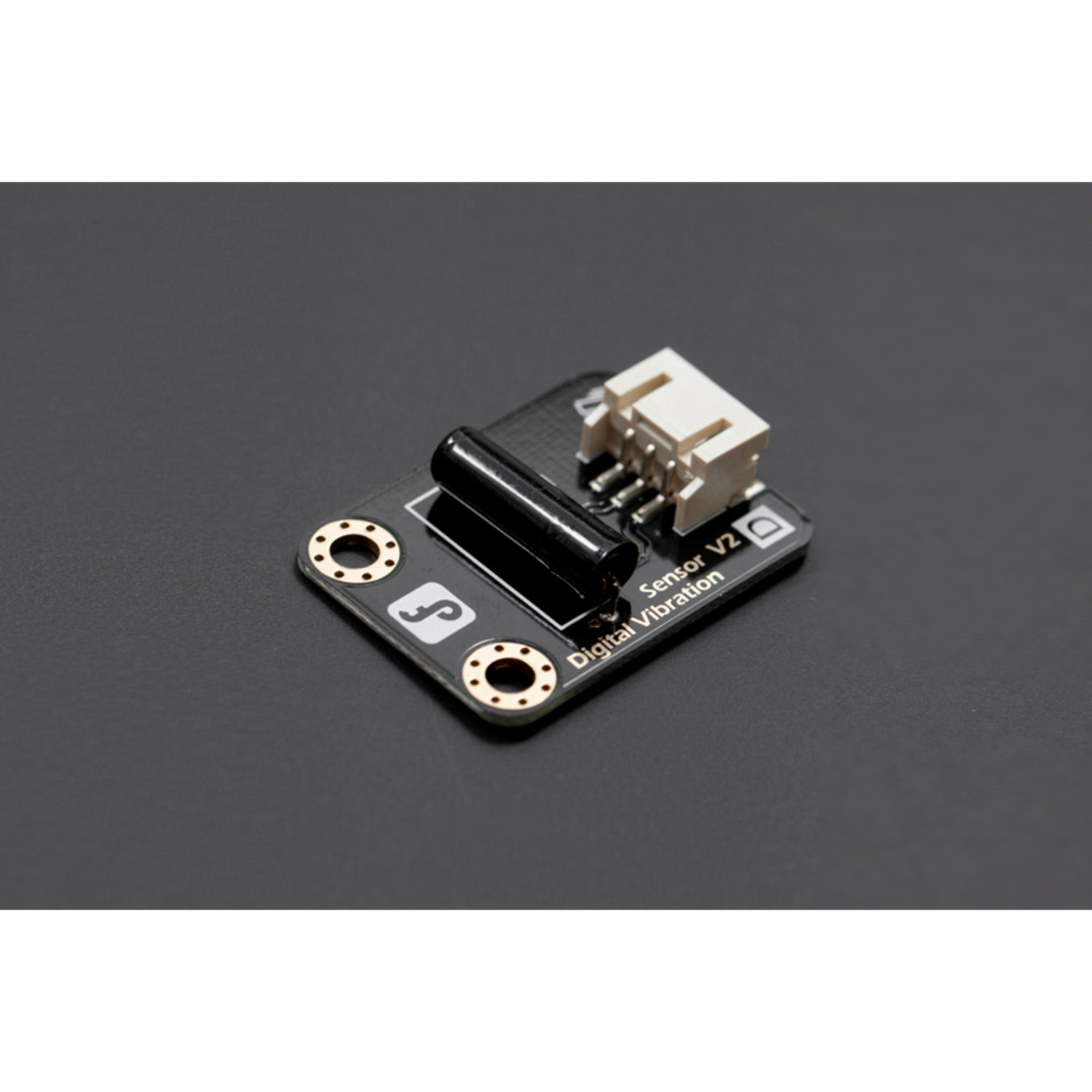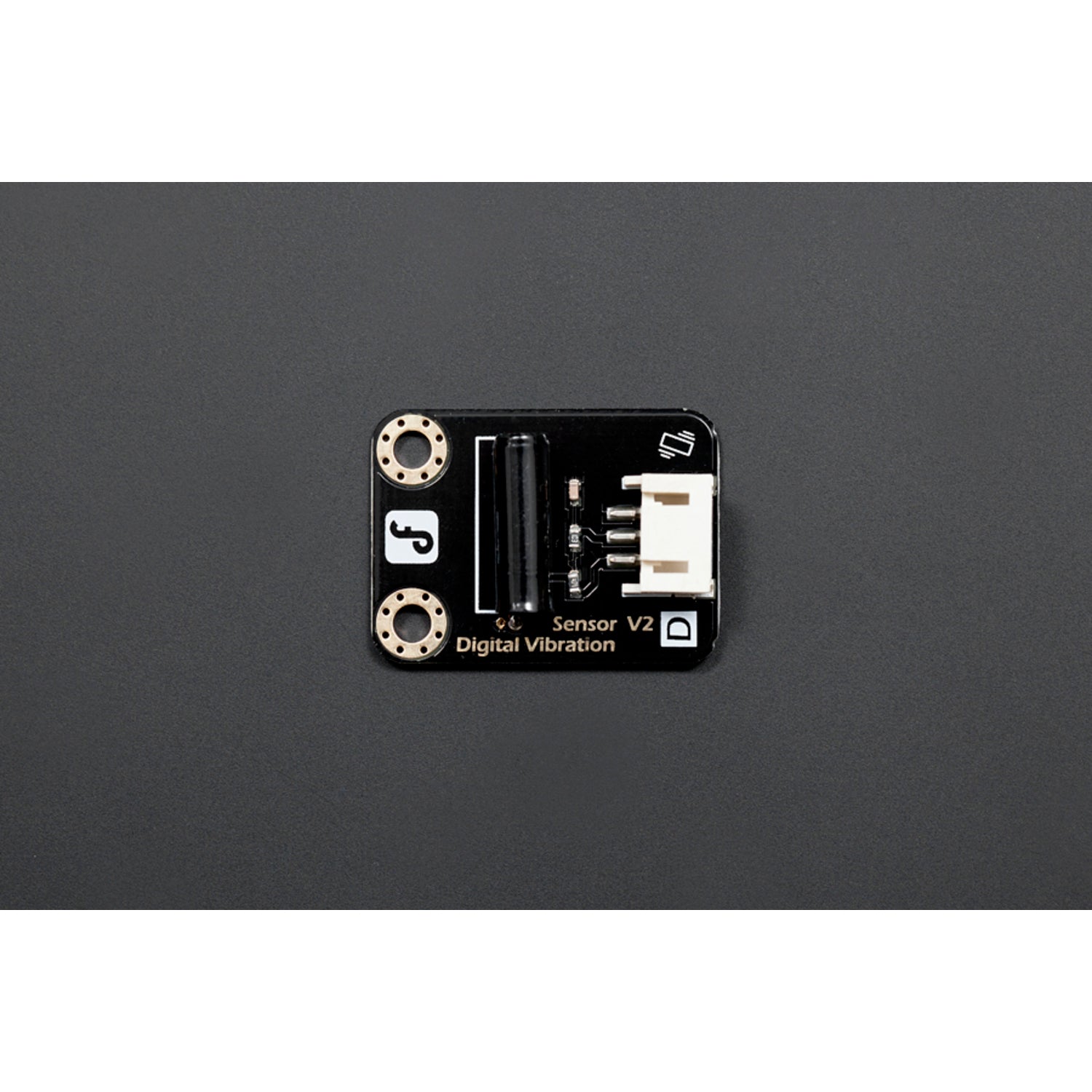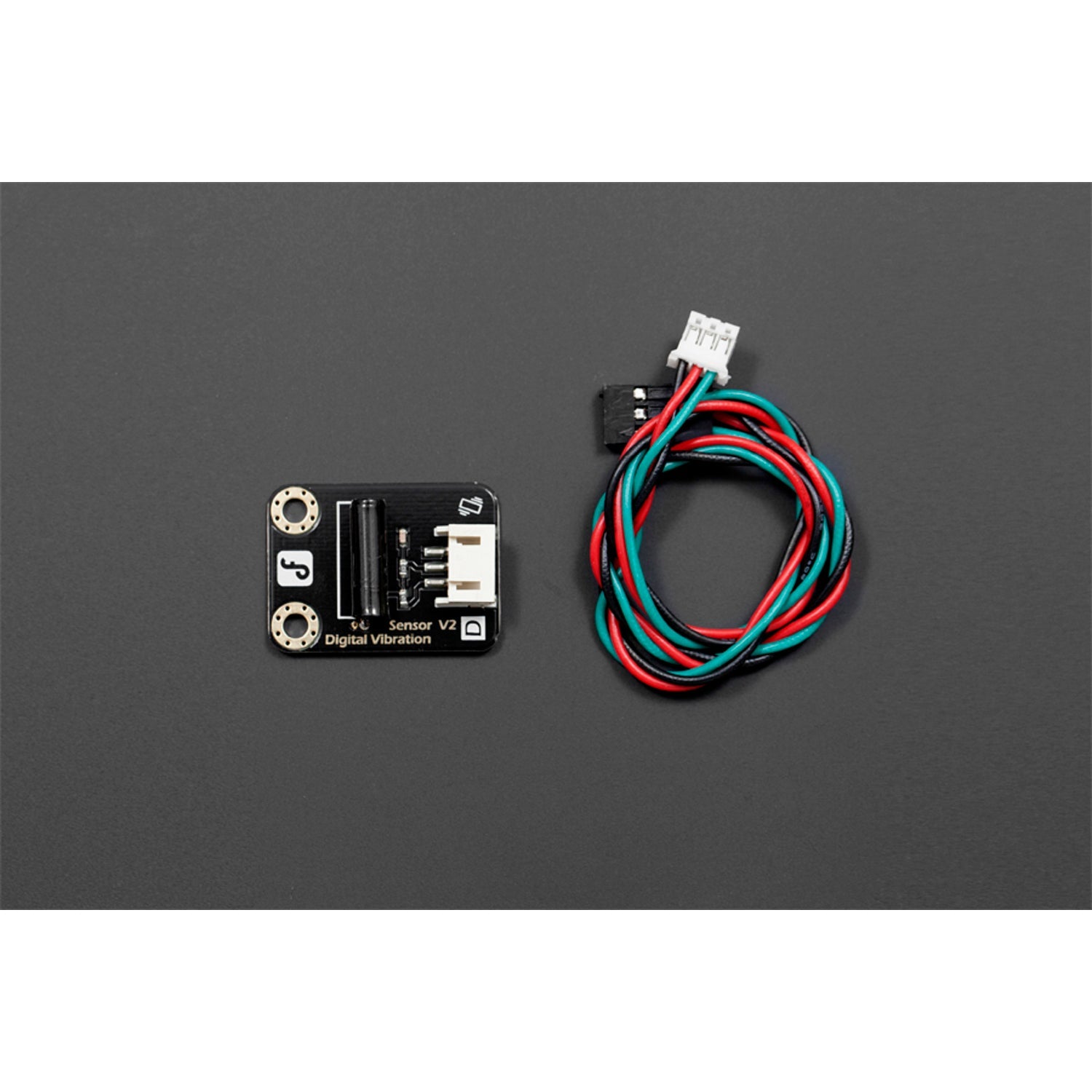Looking for the easiest way to detect vibration with Arduino? Our DFRobot Digital Vibration Sensor is the answer! It directly plugs into our IO Expansion Shield V7. Just vibrate the sensor, and Arduino will receive a digital signal. It's a breeze to count and program in Arduino. Despite its simplicity, with a bit of creative thinking, you can use it for step - counting, crash warning lights, and more. This sensor offers several improvements. It has a wide voltage range from 3.3V to 5V, a standard assembling structure with a 5mm center distance between two 3mm mounting holes. The sensor interfaces are easily recognizable ('A' for analog and 'D' for digital), and there are icons to simply illustrate its function. It also features a high - quality connector and an immersion gold surface. It can even be used as a simple pedometer to count your steps. Specifications include a digital IO type, a switch life of up to 10 million seconds, an open - circuit resistance of 10Mohm, a supply voltage from 3.3V to 5V, a digital interface, and a size of 22x30mm (0.87 x 1.18 in). Documentation includes a wiki and a schematic. The shipping list includes one sensor and one digital sensor cable (SKU:FIT0011).



Using this DFRobot Digital Vibration Sensor is super easy. First, plug it directly into the IO Expansion Shield V7. When you vibrate the sensor, Arduino will receive a digital signal. You can then program Arduino to count these signals. For example, if you want to use it as a pedometer, you just need to write a simple program to count the vibrations as steps. As for the voltage, make sure to supply it with a voltage between 3.3V and 5V. When handling the sensor, be gentle as it's a delicate device. Don't expose it to extreme temperatures or humidity. For maintenance, keep it clean and dry. If you have any questions, you can refer to the included wiki or schematic for more information.